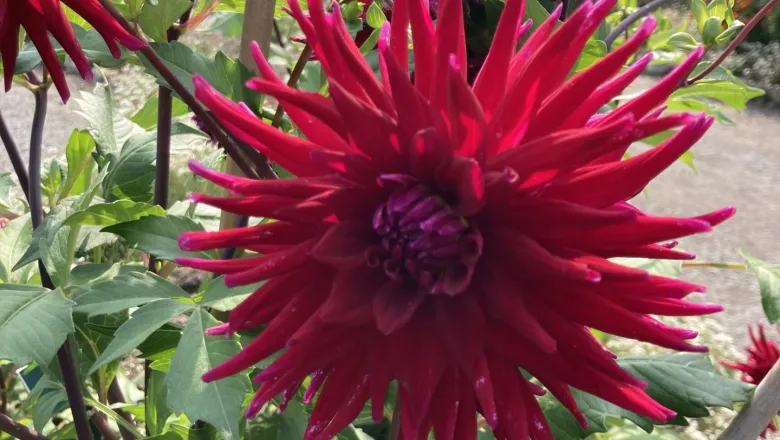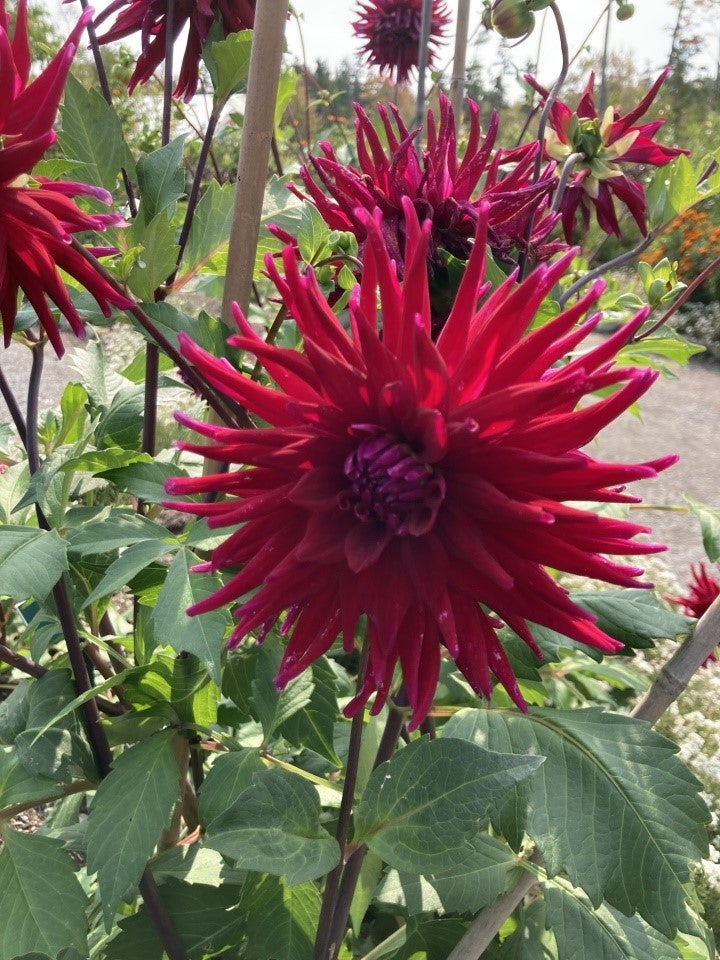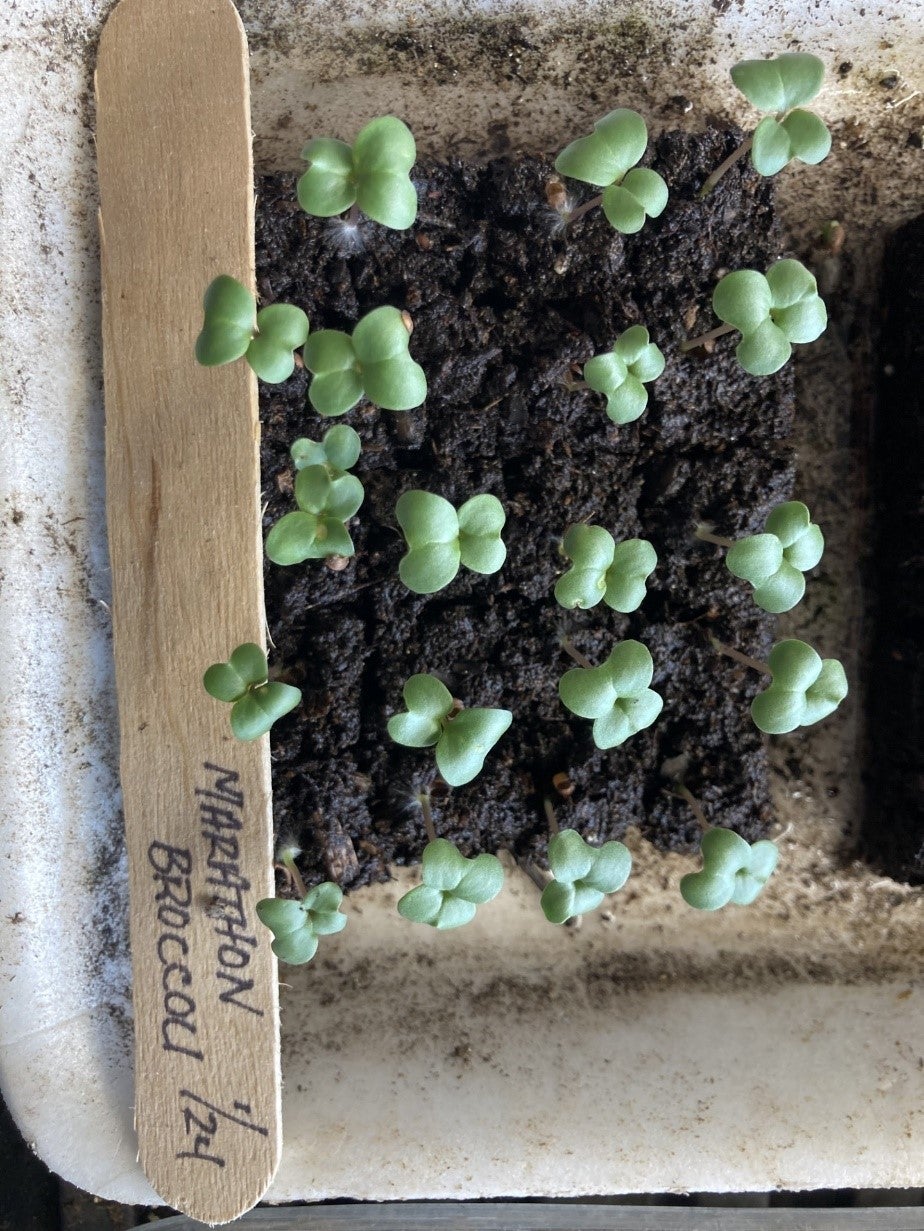Monocots and Dicots

Educator Resources
You’ve probably heard the terms monocot and dicot at some point, maybe it rings a bell from a long-ago biology class. Monocot and dicot are the two divisions used to classify flowering plants, or angiosperms. These names come from the number of cotyledons within a seed, or the first little, tiny seedling leaves that pop out of a seed as it germinates. You may have guessed from the words, monocots, have mono- or one cotyledon, and dicots, have di- or two cotyledons. These initial leaves classify the plant as either a monocot or a dicot, and interestingly, these first initial leaves, often don’t look much like the adult leaves of the plant. For an everyday example, corn, a monocot, sends up one cotyledon, and beans, a dicot, send up two cotyledons. If you soak the seeds for 24 hours or so and cut them in half, you can see the cotyledons inside the outer seed coating. Unless starting seeds is a hobby, chances are these first initial seedling leaves haven’t received much thought.
Monocot and dicot are two of many terms used to help humans classify plants into groups. Starting at the top, the Kingdom Plantae is divided into two types of plants: non-vascular and vascular plants. Non-vascular plants have no internal system for water and nutrient movement, and include liverworts, hornworts, and mosses. Vascular plants contain internal vessels (also known as xylem and phloem) that help move water and nutrients up and down the plant. Because of this internal structure, vascular plants are larger, and can expand well beyond nearby water sources. Vascular plants make up most of the plants in our ecosystems. Vascular plants are also divided into two groups, gymnosperms, which have scaly seeds, and often forms cones, and angiosperms, or the flowering plants. Angiosperms all produce seeds within a type of fruit. It’s this group, the angiosperms, that are divided into monocots and dicots.
- Download the class activities!
From the first initial grown of cotyledons, a whole host of characteristic differences develop between dicots and monocots. Dicots always have branched veins in the leaves, examples include tomato leaves or oak tree leaves with many veins throughout. This venation is often called scatter or netted in botany books. Monocots always have parallel leaves, the classic example is a corn plant, but grasses also have this parallel venation. Following the “parallel path” so to speak, monocot leaves tend to attach to the central structure differently. These monocot leaves attach by a sheath that grows around the central stem; the plant then tends to grow from this central point. A palm tree is an excellent example of this monocot structure, central growth from one point, and leaves attached by a sheath. Dicots, like their branched veins, often form many branches.
A great way to determine if a plant is a monocot or a dicot is to use the flower, specifically the number of parts on the flower. Monocots have flower parts in threes or multiples of threes, lilies and tulips are examples with patterns of three. Dicots have flowers with parts of fours or fives, like a rose or a cosmos.
In addition to flowers, dicots have a taproot system, meaning one large root exists at the base of the plant. Monocots have a fibrous root system that spreads out. Try classifying garden weeds as dicot or monocot. The grasses, monocots with fibrous roots, will have spread out roots that seem to go everywhere; whereas, wild carrots, a dicot with a tap root, will have one large root that goes straight down. Monocots and dicots also have differently structured stems. Monocots have scattered vascular bundles of xylem and phloem all throughout the stems, while dicots have one main system of xylem and phloem around the edge of the stem, with older xylem and phloem tissues found in the middle. If you’ve ever seen a tree cut in half, or played with tree cookies, you’ve seen these old transportation tissues, also known as tree rings.
Plant classification might not be entertaining for everyone, but there is a significant importance to knowing whether a plant is a monocot or dicot? First off, classifying plants can be very useful for both ornamental plants in the house and in the garden. When a monocot has its apical meristem, or main growing point pruned, it will typically stress; however, a dicot when pruned will most likely send out multiple branches of regrowth. If you plan on using herbicides, these chemicals often target either monocots or dicots. Herbicides labeled for broadleaf weeds will kill dicots, while grass killers will of course target grasses or monocots. Selecting the right weed killer is dependent on identifying the problem plants correctly. Lastly, monocots and dicots have different growing requirements, corn fields and bean fields require different care, have different pest and fertility issues and they even obtain nutrients from the soil differently. The more you know the better you’ll grow!
Citations:
Grabowski, J. (2015 January) Dicot or Monocot? How to Tell the Difference. https://www.nrcs.usda.gov/plantmaterials/flpmctn12686.pdf
Moore, K.A., and. L.K. Bradley (eds). 2022. North Carolina Extension Gardener Handbook, 2nd ed. NC State Extension, Raleigh, NC. http://content.ces.ncsu.edu/3-botany

Dahlia, Dahlia pinnata, a Dicot
Flower parts in 4s or 5s, branches venation in leaves and branching habit
Photo: C. DeLong

Tulip, Tulip spp. a Monocot
Flower parts in 3s, parallel venation in leaves
Photo: C. DeLong

Cotyledons of Broccoli ‘Marathon’, Brassica oleracea, a Dicot
Photo: C. DeLong
Author:

Candace DeLong, WVU Extension ANR Agent
304-822-5013; candace.delong@mail.wvu.edu